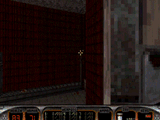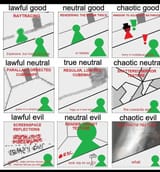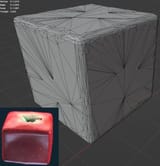>>718200272 (OP)
I usually let this slide but I have nothing better to do.
It's not that they can't, it's that they don't bother. To my understanding modern games are managed very tightly and scope is extended only in directions that push sales. For games where verisimilitude and realism in interaction are not a selling point, interactive features-- especially ones that are purely visual-- are a low priority unless they can be implemented very easily.
Think about the last first person shooter you played; were you able to see your feet when you looked down? Spending resources on IK to map the player's position in space is unimportant to 98 to 99% of gameplay, so if it doesn't work out of the box with less than a few hours of code it will be cut immediately for features like glare off of shiny objects or water 'physics' that are just a compelling shader for distant skybox features.
Mirrors are a last order concern because, unlike a lot of items in day to day life, mirrors can be avoided relatively easily and reimplemented easily if they become important, but only to cutscenes and major setpiece events. You could program a reactive and accurate mirror simulation, or even fake it for all mirrors in the game world, or you can keep the player from entering any bathrooms, or sitting in any place where reflections are visible (car mirrors, etc). You can even fake the impression of mirrors by including shiny objects in the environment, but putting them at angles or distances that won't allow direct viewing by the player.
Remember when raytracing popped up? A bunch of games hauled out with mirrored surfaces to demonstrate the technology, but when that failed to drive consumer purchases, they backed off implementation to the simplest and easiest simulations for screenshot bullshit and promotional pageantry.
On the other hand, for games where simulation of the environment is crucial, mirrors appear readily and with great fidelity (eg. Hitman WOA).














































